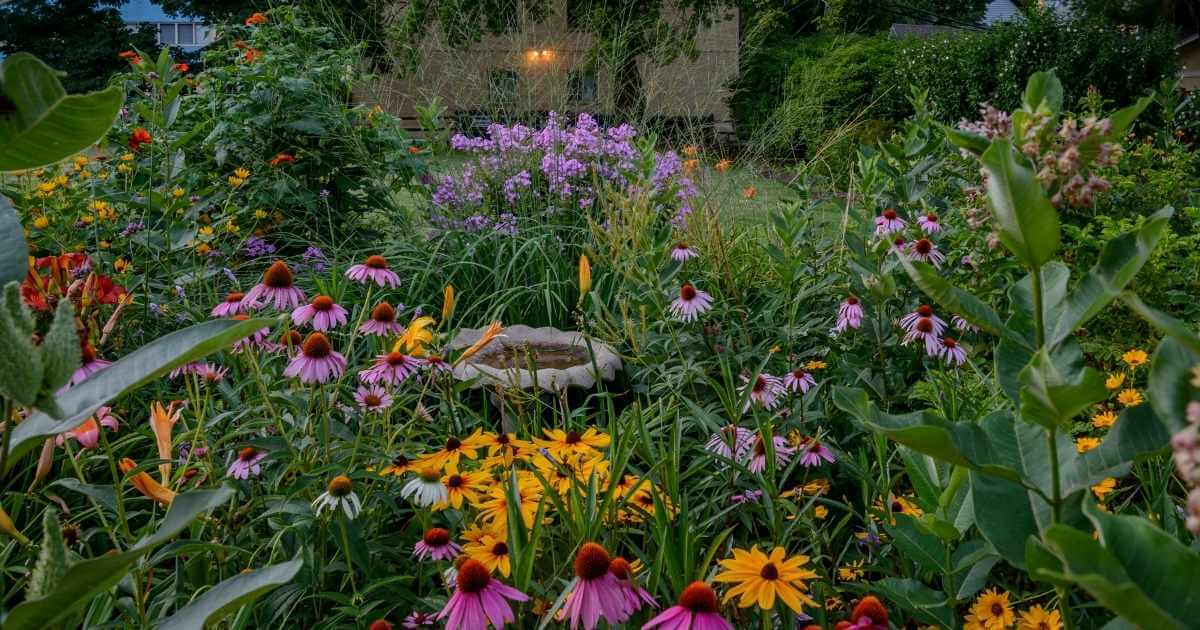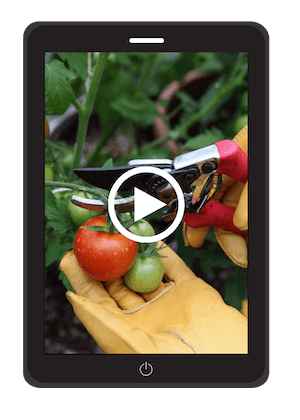Month By Month Gardening In Texas
Your 12-Month Garden Checklist for North Texas

The growing conditions in North Texas are unique. With hot summers and cold winters, our climate can be challenging for any gardener. To keep you on track and ensure that everything you plant is a success, we have created monthly garden checklists for the entire year.
Your Monthly Garden Tasks
For planting dates by specific crop, go here.
January
- Plant onions now through the end of the month.Onions need as much time in the ground as possible. The more leaves an onion has at bulbing, the bigger the bulb. Here in North Texas, we grow short-day and intermediate-day onions. See: The Ultimate Guide to Growing Onions in North Texas.
- Start seeds for spring tomatoes. This might seem early, but tomato transplants need to be ready to go in the ground late February to mid-March.
- Start perennial seeds indoors.
- Start cool-season vegetables by seed. Indoors: Broccoli, brussels sprouts, cauliflower, collard greens, kale, lettuce. Outdoors: Spinach, swiss chard.
- Plant trees and shrubs.
- Divide perennials and biennials such as phlox, violets, hollyhocks, irises, daylilies and shasta daisies if they are crowded.
February
- Plant seed potatoes.Seed potatoes are available at local garden centers.
- Plant asparagus crowns. Asparugus is a perennial and takes roughly two years to establish.
- Plant winter annuals like dianthus, pansies, and snapdragons.
- Plant cool-season vegetables:
- By transplant: Broccoli, brussels sprouts, cabbage, cauliflower, chinese cabbage, kohlrabi.
- By seed outdoors: Beets, carrots, collard greens, kale, lettuce, mustard greens, spinach, swiss chard, turnips, radish.
- Divide summer and fall-blooming perennials.
- Plant or
prune trees. Winter is the best time to plant new trees or toprune existing ones. Use a certified arborist. -
Prune roses. Valentine's Day, February 14, is an easy date to remember for pruning back roses. Cut out dead canes, and cut plant back by two-thirds. Wait toprune climbing roses until after their spring bloom. - Start peppers and eggplant by seed indoors.
March
- Plant or replace cool season annuals.
- Set out tomato transplants. Once all chances of frost are gone, set out tomato transplants and begin fertilizing.
- Plant new trees and shrubs.
- Fertilize lawn. The secret to a
weed -free lawn is a good fertilization program. Avoid "weed -and-feed" fertilizers! These are not good for North Texas lawns because by the time weeds arrives it is too hot to applyfertilizer . -
Prune spring-flowering shrubs and vines after they finish blooming. - Continue fertilizing winter and spring annuals.
- Continue planting cool-season vegetable seeds outdoors. Beets, carrots, collard greens, kale, kohlrabi, lettuce, mustard greens, scallions, spinach, swiss chard, turnips.
- Plant beans by seed outdoors. Bush beans, lima beams, pole beans, and snap beans.
April
- Start planting summer annuals. Lantana, pentas, begonias, vinca, and coleus.
- Plant new perennials.
- Mulch all of your garden beds. Mulch reduces water loss by 50%. It also protects against disease.
- Continue planting trees and shrubs.
- Plant summer vegetables. By seed: corn, cucumbers, squash, watermelon, and zucchini. By transplant: pepper, cucumbers, squash, and zucchini.

May
- Replant garden spaces that have opened up after early harvests. I replace my garlic and onions with cucumbers, eggplant, peppers, ProCut sunflowers, and
zinnias . - Watch tomato foliage for signs of disease (yellow and brown lesions) and remove all diseased leaves. Keeping tomatoes well-pruned will control disease without having to apply fungicides.
- Keep pinching blooms off basil. This encourages branching for a stockier plant that won't flop over so easily.
- Complete all major plantings before the heat sets in.
- Treat worm and caterpillar damage with BT (Bacillus thuringiensis) but take care to spray early morning or late evening to reduce chance of affecting pollinators.
- Sharpen mower blades.
- Start tomato, eggplant, pepper seeds for fall vegetable transplants at the end of the month.
- Continue planting summer vegetables by seed: black eyed peas, okra, corn, cucumbers, squash, melons, pumpkins, zucchini.
June
- Larger, beef-steak type tomatoes are starting to ripen. Harvest tomatoes at "breaker" stage when the first blush of color appears at the blossom end. This will protect your crop from garden pests. Let finishing ripening on the kitchen counter.
- Harvest garlic and onions.Cure in a protected, well-ventilated area such as a garage or basement until tops, stems, and outer skins are dry.
-
Watering needs are increasing. Maintain fertility with liquidfertilizer applications or incorporate a slow-releasefertilizer into the top 3 inches of soil. (Fertilizers can vary widely, so always follow the directions on thelabel .) - Begin preparations for fall vegetables. Start seeds for tomatoes, peppers, and eggplants. Sow melon seeds. Order seeds for July and Aug in-ground sowing of winter squash, greens, cabbage, cauliflower, and beans.
- If worms are tormenting your tomatoes begin weekly applications of BT. Bacillus thuringiensis is a pest control product that is effective for controlling pinworms, hornworms, and caterpillars. To protect pollinators, only apply early in the morning or late in the evening.
- Consider plant-sitting services while on summer vacation. Plant-sitting meets the needs of gardeners whose plants and gardens require more careful care. Before hiring, double-check expertise. Qualified plant-sitters include certified master gardeners, gardeners with at least 10 years experience, or professionals holding a horticulture degree.
- Keep roses blooming with dead-heading and disease control. Cut dead rose blossoms back to the first 5-parted leaflet. Treat disease with an application of fungicide specifically formulated for roses. Always follow
label directions. It's the law. - Plan ahead for fall vegetables. Call local garden centers and ask what fall vegetable transplants they stock. If you started fall vegetables started from seed, keep them fed. Fertilize seedlings with half-strength, water-soluble
fertilizer once they have two sets of true leaves. - As blooms fade on perennials, trim plants black. This stimulates new growth for an even more spectacular bloom in the fall. Take care not to overwater or over-fertilize perennials. They resent both.
July
- Provide fresh water for birds. Set up a bird bath in the garden, and replenish frequently with fresh water. Providing water options can also discourage birds and squirrels from eating tomatoes.
- Plant small melons and winter squash by seed. Give plants plenty of room to spread. Amend soil with compost, and thoroughly clear away any debris from previously planted vegetables. Plant 2-3 seeds in a hill, and keep moist. Once plants have three or four true leaves, thin to one seedling. Maintain a consistent schedule of fertilization. You can also plant okra and southern peas by seed now.
- Set out tomato, eggplant, and pepper transplants. Protect tender transplants with
shade cloth until established, and mulch deeply to conserve moisture. All three vegetables are heavy feeders. Fertilize regularly for maximum harvest. -
Prune roses to promote strong fall bloom. Remove spent blooms, and cut back vigorously growing bushes by a third. Hold off on all other bush and tree pruning until midwinter.
August
- Plant fall annuals. Marigolds and ornamental peppers.
- Start cool season vegetables by seed indoors: Broccoli, brussels sprouts, cabbage, cauliflower, mustard greens, spinach, and swiss chard.
- Plant fall vegetables seed outdoors: Cucumbers, beans, summer squash, zucchini, and swiss chard.
- Seed wildflowers.
- Plant bearded iris rhizomes.
September
- Plant annual fall color. Mums, marigolds, and ornamental peppers.
- Sow poppy seeds.Mix seeds with about a cup of fine sand and cast over soft soil. Pat down the soil gently. Poppy seeds need light to germinate. Keep moist until sprouting.
- Continue planting fall-season vegetables.By seed outdoors: Broccoli, beets, carrots, brussels sprouts, cucumber, english peas, summer squash cabbage, cauliflower, collard greens, lettuce, kale, radish, spinach, and turnips.By transplant: Broccoli, brussel sprouts, cabbage, cauliflower, lettuce, greens.
- Start planting trees, shrubs, and perennials. Cool temperatures help roots to become established before winter.
October
- Plant cool season annuals. Pansies, ornamental kale, and snapdragons.
- Plant cool season herbs like cilantro and parsley.
- Plant garlic cloves. Garlic is available at local garden centers and by online ordering from garlic farms.
- Continue planting cool-season vegetables by seed and by transplant.
- Prepare for frost. The average first frost date for North Texas is November 21, but early freezes are always a possibility. Prepare by stocking up on floating row covers, and make a list of all the tender plants that will need protection in case of a freeze warning.
November
- Continue planting trees and shrubs.
- Dig and divide spring blooming perennials.
-
Prune back fall-blooming perennials. - Plant narcissus and pre-chilled tulips by end of the month.
- Plant cool season annuals. Pansies, dianthus, and ornamental kale.
- Continue planting cool-season vegetables by transplant.
December
- Continue planting trees and shrubs.
- Trim back any perennials damaged by frost, but try and leave seed heads as food for birds.
- Continue planting cool season annuals. Pansies, violas.
- Add leaves to the compost pile.
- Peruse seed catalogs and place orders early. Beat the spring rush of seed buyers, by ordering seeds now. Review your planting records to see what performed well during the previous growing season.
- Keep
watering plants during periods of drought. - Finish planting pre-chilled tulips and hyacinths.
- Inspect your frost cloth and replenish as necessary. Now is the time to prepare for January and February freezes. Make sure you have plenty of frost cloth on hand, and consider placing large outdoor planters on wheels for easy moving.
More Resources
Spring Planting Schedule
Fall Planting Schedule
- Author
- Recent Posts
![]()
Founder of The Dallas Garden School, Callie has 15 years of gardening experience and horticulture education. She specializes in growing food, small-space gardening, managing community gardens, and plant propagation. She has an MBA from Southern Methodist University, a joint Business-Spanish degree from Skidmore College, and served as a horticulture intern for the Dallas Arboretum & Botanical Gardens. Callie is a member of the Native Plant Society of Texas, The Herb Society of America, the National Garden Bureau, and is a Certified Texas Master Gardener.
![]()
Month By Month Gardening In Texas
Source: https://thedallasgarden.com/north-texas-garden-calendar/
Posted by: cottowhinsed.blogspot.com

0 Response to "Month By Month Gardening In Texas"
Post a Comment